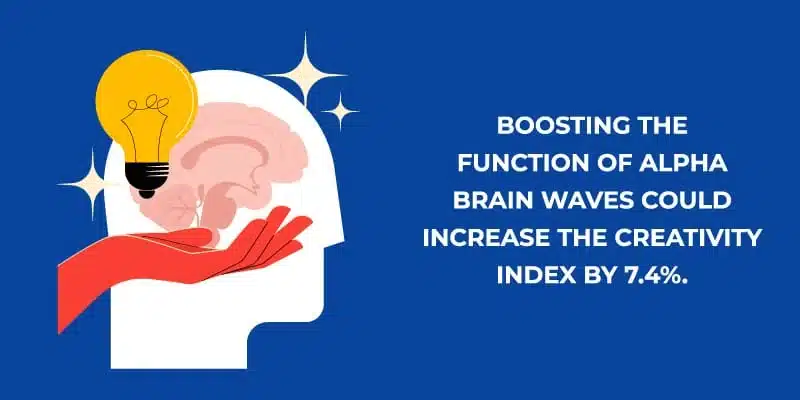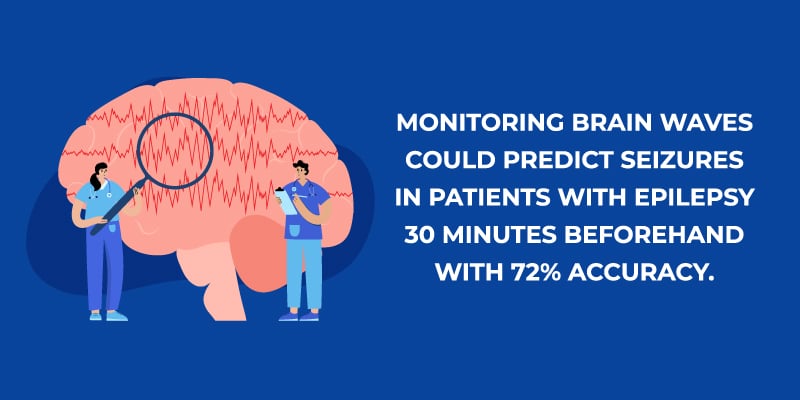
J. Flowers Health Institute Brain Mapping Services
J.Flowers Health Institute offers cutting-edge brain mapping services to diagnose and treat a variety of conditions. Read on to learn more.
Table of Contents
What Is Brain Mapping?
Brain mapping is a tool that can be used to evaluate brain waves and the communication between neurons. There are billions of neurons that communicate throughout the body.
This means measuring the signals from brain waves sent between them can be an effective diagnostic and treatment protocol for a variety of conditions that affect the mind.
How Does it Work?
Brain maps are captured using an electroencephalogram (EEG). Patients will wear a cap on their scalp that uses software to capture electrical impulses flowing throughout. The process of creating a brain map, sometimes referred to as a neuro map, takes about 15 minutes.
While the cap worn on the scalp can look a bit daunting to some, it is a very comfortable and pain-free process. It’s similar to other forms of electro-imaging used in medical practices, such as X-rays or CT scans.
You won’t feel anything, but it gives medical professionals a more thorough overview of the processes going on in your mind to provide better treatment.
The Data From Brain Mapping
Once completed, the software used for mapping will create a visual of the electrical signals firing in the brain. It will display information in a way that’s easy to understand and will provide your medical staff with what they need to know to create an effective program for your needs.

How Does Brain Mapping Contribute to Our Understanding of the Human Brain?
A brain map contributes significantly to our understanding of the brain and how it functions during different points of our daily processes. This is due to the fact that it can capture data about all five of the basic types of brain waves: alpha, beta, delta, gamma, and theta.
If certain types of brain waves aren’t functioning at top capacity, it can give medical professionals a better idea of the types of treatment needed.1
Let’s take a look at how each of the different types of brain waves contributes to cognitive function:
Alpha Brain Waves
Therefore, focusing on activities like meditation or other stress-relief methods that make these brain waves the most active can have several cognitive benefits. It’s why relaxation techniques are so prominent in the treatment of mental health, substance use disorders, and more.
Important Note About Alpha Brain Waves
Another study also found that many who struggle with major depressive disorder (MDD) have lower activity in their alpha brain waves.
Beta Brain Waves
Your beta brainwaves are typically the most prominent when you’re in an active, attentive, or anxious state. With these waves, it’s important to maintain the right balance.
Beta waves that are too high can cause someone to be in a state of anxiety or panic. On the other hand, low amounts of beta waves can lead to poor mood, daydreaming, and lower cognition.
Delta Brain Waves
Gamma Brain Waves
Gamma brain waves are the most elevated when you’re at peak concentration. Several studies have found that you can boost gamma brain waves to get into this state more easily.
Note About Gamma Brain Waves
While high gamma brain waves can sound beneficial, they can also get too high. Studies have found that this is most common in individuals with high stress levels, lack of sleep, or who have experienced combat-related trauma to the brain.
Specifically, combat-related brain injuries can affect two of the four frontal lobes of the cerebral cortex, significantly elevating gamma levels to the point of causing anxiety or paranoia. Studies have found this is common in about 89% of individuals who showcase symptoms of PTSD due to traumatic brain injury.8
Theta Brain Waves
Like delta brain waves, your theta waves are most active during sleep. However, theta waves are more prominent during earlier or lighter phases of the sleep cycle. They’ll be most active when you’re just drifting off to sleep or just before you wake up.
Someone who struggles with insomnia due to stress or anxiety may struggle with theta waves that are too low or too high, making it hard to fall asleep and maintain good sleep throughout the night.
The Overall Impact of Brain Mapping on Medical Treatment
As you can tell, there is a lot that medical professionals can learn from the activity of brain waves. It’s why we choose to use it as a primary part of diagnosis and treatment planning at J. Flowers Health Institute.
For instance, if someone is suffering from major depressive disorder and they show significant imbalances in delta and alpha brainwave activity, our treatment team can design a functional treatment program that helps with relaxation, mindfulness, and influencing deeper sleep.
Techniques Used in Brain Mapping Offered at J. Flowers Health Institute
Many neuro-mapping procedures only offer a small amount of data. However, at J. Flowers Health Institute, we use qEEG Brain Maps. These are able to gather significantly more data about how each of the five primary types of brainwaves is functioning.
We do this by gathering data when your mind is in different states at various points of the day to pinpoint which areas could use assistance. Techniques we use include:
- Non-invasive processes
- Monitored electro-cortical, cognitive-behavioral training
- Targeted training to specific areas that need the most help
- Changing connections in the brain for improvements and lasting results
Each of these processes has many benefits and can provide several insights during treatment.
How These Techniques Provide Insights into the Brain's Structure and Function
Performing the above treatment methods at J. Flowers Health Institute provides you and our staff with knowledge of your brain’s function to facilitate better results from treatment.
When we understand which areas of the brain need the most work, it provides insights for more intentional treatment methods.
Additionally, regular check-ins through electro-cortical cognitive behavioral training allow treatment professionals to easily track progress and adjust treatments to your specific needs. Therefore, we can determine what types of therapies or mindfulness activities would be best to achieve optimal results.

How Brain Mapping Helps Researchers Understand Specific Regions of the Brain
Everyone’s condition and brainwaves operate a bit differently. That means brain mapping can have significant benefits for researchers and treatment professionals.
Through brain mapping, researchers are learning more and more about how cognitive function can be boosted.
Additionally, it helps researchers gain more knowledge about language processing and motor control. Continued studies are also ongoing about how balancing beta brain waves can impact both of these aspects.
How Brain Mapping Helps Understand Neurological Disorders
Several neurological disorders can benefit from additional knowledge of brain waves.
Early studies on brain wave activity in Alzheimer’s patients have already provided lots of information that treatment professionals can use.
What studies have found is that raising gamma brain wave activity can reduce proteins related to Alzheimer’s and slow neurodegeneration.10
Further Notes on Neurological Disorders
Other studies have also found that monitoring brain waves can help with the treatment and prediction of seizures caused by epilepsy.
One study found that monitoring brain waves could predict seizures in patients with epilepsy 30 minutes beforehand with 72% accuracy.11
Epileptic seizures are the most common when brainwave levels are too high. Therefore, many researchers have found that treatment to balance brain waves can have significant positive impacts.

Can Brain Mapping Predict or Diagnose Neurological Conditions?
There is a lot of ongoing research about the ability to predict or diagnose neurological conditions with brain mapping.
Implications of Early Intervention and Treatment Using Brain Mapping
Brain mapping is a useful tool in early intervention and treatment processes. When patients receive treatment from us at J. Flowers Health Institute, we often recommend brain mapping as an initial step.
Being able to understand the patient’s brain wave activity helps our team plan a tailored treatment plan for individual needs, and it also yields more positive long-term results.
For instance, if someone is struggling with anxiety, we can get a better understanding of how it affects their ability to focus on daily tasks, sleep, or remember key information. That way, we can deploy specific treatment methods for whichever areas of their life they’re struggling with the most.
Recent Advancements and Breakthroughs
One of the recent advancements in brain mapping was the combination of infrared laser stimulation with magnetic response imaging.
This helps provide a more detailed image of the brain. So far, it has mostly been studied in animals, but scientific professionals are hopeful it can be deployed for humans in the coming years. Recently, scientific research also developed a new brain mapping technique called map-sequencing (MAPseq).
Other Innovations With Brain Mapping
Other innovations have started making brain mapping more accessible to more people. For example, the qEEG brain mapping system we use at J. Flowers Health Institute is a more affordable solution to capture a multi-functional diagram of someone’s brain waves.
Also, it’s more accurate than other systems that have come before it, leading to better diagnoses and treatment plans.

How J. Flowers Health Institute Uses Brain Mapping
At J. Flowers Health Institute, we use brain mapping techniques in a variety of ways to get our patients the best results during treatment.
Many of our initial diagnostic procedures and ongoing treatment methods use it to formulate an effective treatment plan and track results.
Services Offered at J. Flowers Health Institute
Every patient who receives treatment at J. Flowers Health Institute has the opportunity to receive a brain mapping guide that informs treatment.
We treat a wide range of conditions, including:
- Chronic pain
- Complex medical conditions
- Eating disorders
- Gambling, sex, and technology addictions
- Mental health
- Substance use disorder
With informed treatment through brain mapping, we are able to tailor a complete plan to your specific needs. Every step of the way, our knowledgeable staff will be there to help and guide you toward success to help you work through any symptoms you may have.
Contact Us Today
To learn more about our brain mapping services at J. Flowers Health Institute or how we can help with your needs, contact us today.
We’re here to answer any additional questions you have so that you can get the most holistic and comprehensive treatment possible.
Resources
- https://www.sciencedirect.com/topics/agricultural-and-biological-sciences/brain-waves
- https://www.sciencedirect.com/science/article/abs/pii/S0010945215001033?via%3Dihub
- https://www.nature.com/articles/s41398-019-0439-0?
- https://www.sciencedirect.com/topics/medicine-and-dentistry/beta-wave
- https://www.sciencedirect.com/science/article/abs/pii/S0920996410016324?via%3Dihub
- https://onlinelibrary.wiley.com/doi/10.1111/acer.12006
- https://www.ncbi.nlm.nih.gov/pmc/articles/PMC5261734/
- https://academic.oup.com/cercor/article/30/1/283/5482276
- https://www.ncbi.nlm.nih.gov/pmc/articles/PMC4741268/
- https://www.nia.nih.gov/news/noninvasive-brain-wave-treatment-reduces-alzheimers-pathology-improves-memory-mice
- https://www.ncbi.nlm.nih.gov/pmc/articles/PMC4611494/
- https://pubmed.ncbi.nlm.nih.gov/11677410/
- https://www.cshl.edu/research/core-facilities/mapseq/









